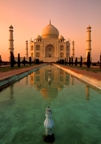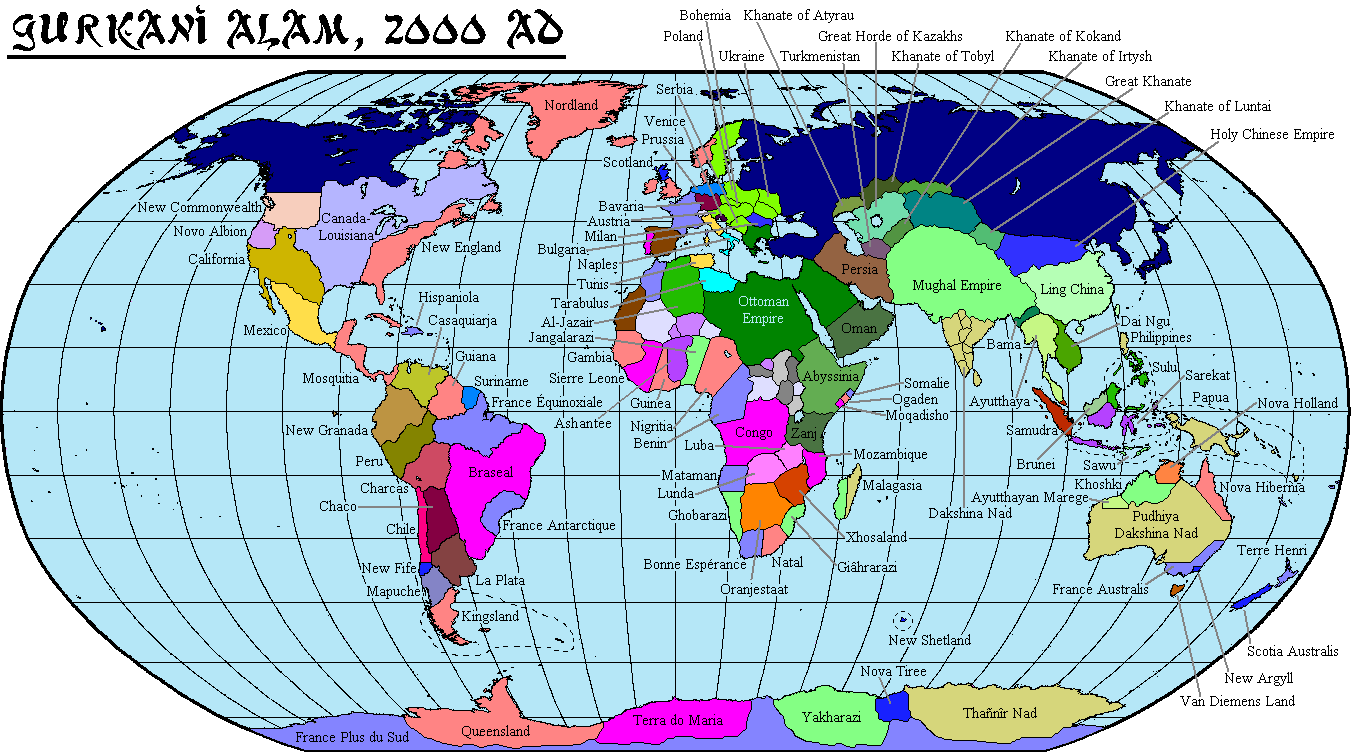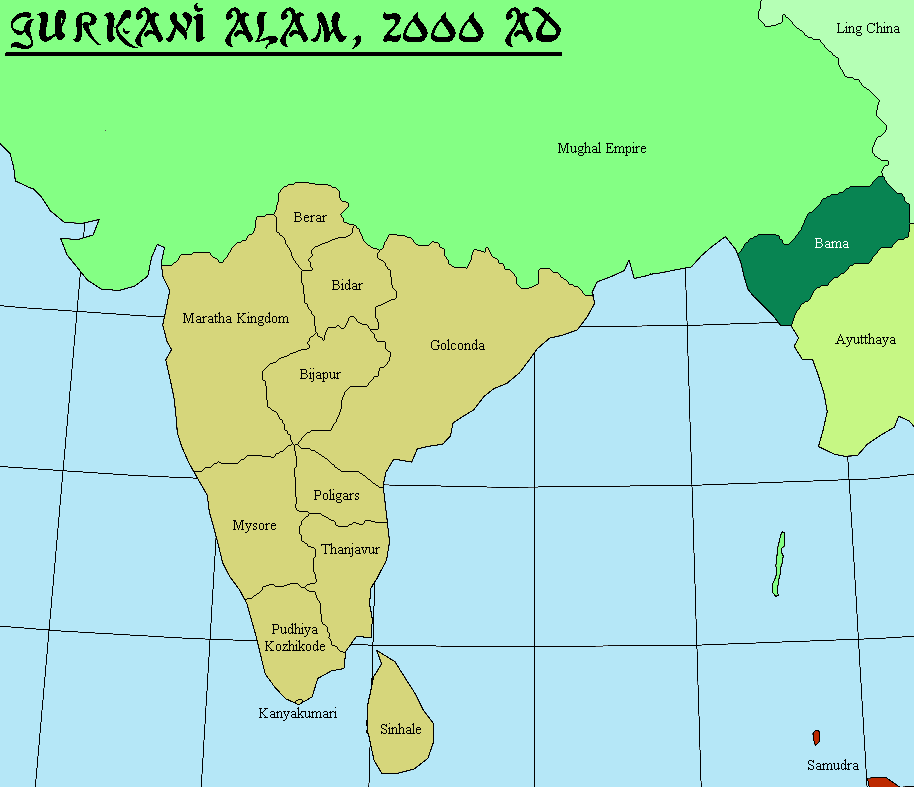

THE WORLD

 |
THE WORLD |
 |
The World in 2000 | Africa | Central America And The Caribbean | North America | South America | Antarctica
Central Asia | Eastern And South-Eastern Asia | South Asia | Europe | The Middle East | Oceania
Timeline | Differences | Politics | Science and Technology | Society | Notes | Summary | Home
This page is divided into the following sections:
Click on the section names to return to the top of the page.
With India remaining rich and strong, European colonialism around the Indian Ocean was curtailed, leaving the Indian states and their allies in effective control of southern and south-eastern Asia, Oceania and East Africa, with Europe taking control of West Africa and the Americas. In northern Asia, Russia, reborn as the theocratic old believer Holy Russian Empire, is the only European-derived power.
 |
 |
The world is divided up as follows:
| Continent | Nations | Colonies/Dominions |
|---|---|---|
| Europe | 18 | 3 |
| Asia | 15 | 1 |
| Africa and Middle East | 19 | 24 |
| North America | 4 | 2 |
| Central America and Caribbean | 1 | 3 |
| South America | 8 | 7 |
| Australasia | 6 | 12 |
| Antarctica | 0 | 6 |
| Total | 71 | 58 |
The environmental situation in Gurkani Âlam is considerably different to that in the real world. The much earlier development of electrical technology using power derived from wind and water, and the somewhat earlier development of nuclear power in this world has led to a much less burning of fossil fuels to produce electricity compared to the real world (fossil fuels instead are used mainly in the plastics industries). This means that global warming is essentially non-existent in Gurkani Âlam, so weather and climate patterns remain largely unchanged, and in fact some climatologists speculate that the world will soon (in geological terms) be entering a new ice age. This is possibly being aided by the dust and debris spread into the atmosphere during the Long War by the significant numbers of nuclear weapons and orbital bombardment projectiles used during it.
On the other hand, the faster technological development and greater world population in Gurkani Âlam derived from this (some ten billion people in the year 2000) has led to some resources (such as coal and metals) being used more quickly, though none have yet run out. However, limits of supply and cost have led to wide use of substitutes, either more of inferior materials, or ceramic or plastic materials with similar properties. It has also led to the development of technologies that allow the mining of minerals from the deep sea and in Antarctica. Another effect of this has been the significant pollution of parts of the industrialised world.
The same factors have led to greater depletion of the living world. For example, over-hunting has rendered the north American bison, polar bears and sea otters extinct outside of zoos, while the north Atlantic cod fisheries have all collapsed due to over-fishing [in the real world only those of Canada, on the Grand Banks, have done so as of 2007].
On the other hand, some species have benefited from the different history of this world. The main one of these is Asian elephants, working members of which species are found across the world, even in advanced nations. In many places, particularly in South America and Marege, but also in parts of Africa, there are also feral Asian elephants. Indian species in general are more widespread than in the real world. Species from Marege [Australia], such as kangaroos and emus, are also found across most of the world, where they are bred for food.
Working elephants have been used a great deal in the past, not just in India but around the world. For example, in some European countries working elephants were used to pull canal boats. Even after mechanical engines were developed, in some places elephants have remained in use simply because they are better under those specific conditions.
Another environmental issue is the amount of radioactivity released into the environment over the years. This comes from a number of sources, including the nuclear attacks carried out during the Long War, the destruction of the Mughal Thar Desert research base in 1943, and various other nuclear incidents and accidents down the years. This has all significantly raised the global level of background radiation, with of its associated increased health risks.
The World in 2000 | Africa | Central America And The Caribbean | North America | South America | Antarctica
Central Asia | Eastern And South-Eastern Asia | South Asia | Europe | The Middle East | Oceania
Go to the Gurkani Âlam Timeline, Differences, Politics, Science and Technology, Society, Notes or Summary Pages.
Back to the Gurkani Âlam Home Page.
 |
Copyright © Tony Jones, 2007.
This work is licensed under a Creative Commons Attribution-Noncommercial-Share Alike 3.0 License. |